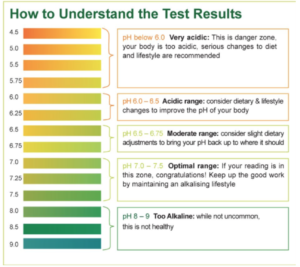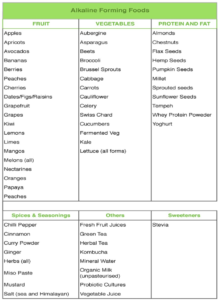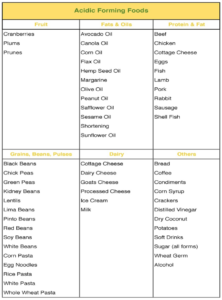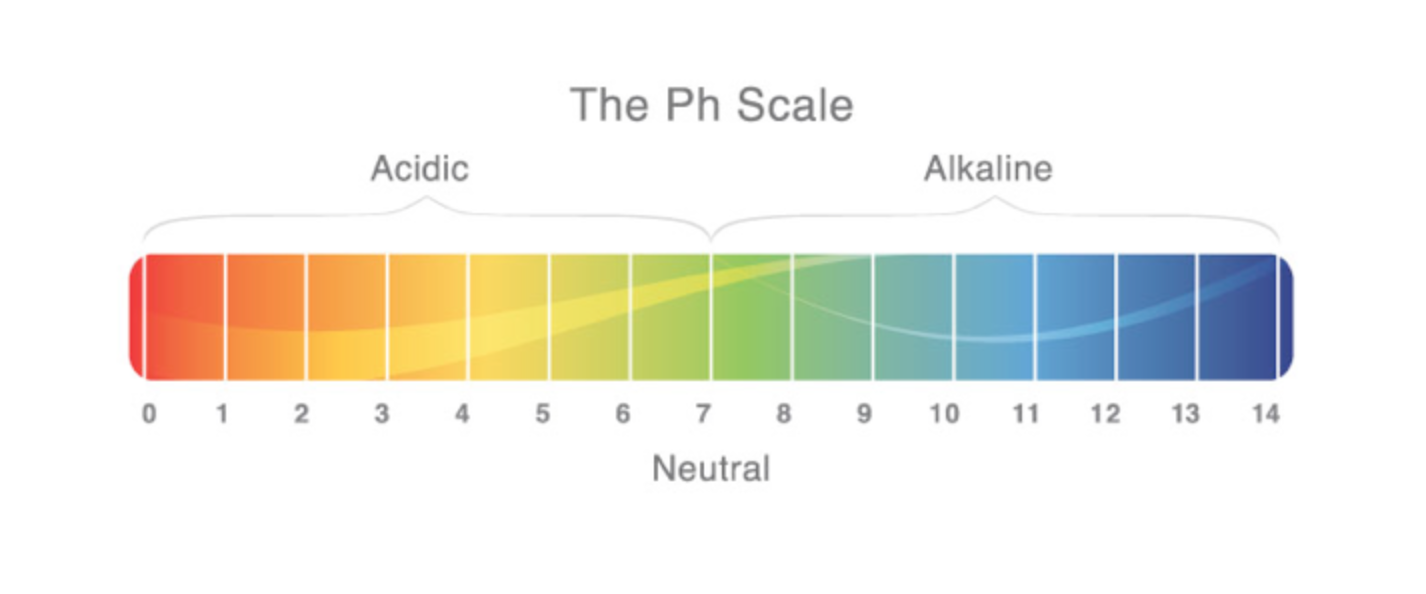One of the biggest contributes to what effects our body pH is the food we eat. Because of the accessibility these days to processed foods and sugars, there is a lot of people walking around in a chronic state of acidosis. This is what you do not want as it leaves your body in a state more open to illnesses and disease
This does not mean that you need to start eating 100% alkaline foods. Like everything in life, we need balance. The balance between these two should be a ratio of 80/20- 80% alkaline to 20% acidic.
I often recommend people to take a look at their pH. It’s a fun and informative exercise to do, and is so simple, easy and cost-effective! It also gives you a strong insight as to where your current pH levels are at so you can make any necessary shifts. In order to test your pH, you will have to buy pH urine and/or saliva strips at your local drug store or health food store. I really love the genuine health strips. Follow the simple steps below to test your pH:
- Pickup pH strips from the local drugstore or health food store.
- Do a reading first thing in the morning, 1 hour before a meal or 2 hours after
- eating. It is up to you when you do it (whatever is most convenient for you!) just
- make sure it is consistent as at the same time each day.
- Tear off a strip 2.5cm long.
- If testing urine, test mid-stream. If testing saliva, make sure to spit once and on
- the second time spit saliva onto a spoon and dip pH strip in it.
- Try testing each day for 30 days and as you make shifts to a healthier diet
- including more anti-inflammatory foods you may see this shift! An ideal reading is between 7-7.4.

Understanding the Role of Inflammation
Chronic inflammation has become a large problem due to high levels of stress, poor quality diets, toxins in our environment and not enough sleep. We are constantly in overdrive, fight or flight and are always being stimulated through content overload and stimulants like coffee.
Over time, too much inflammation and too much acidity can lead to arthritis, joint pains, digestive issues, fatigue, skin issues like eczema or psoriasis, toxic overstressed liver, heart disease, many cancers, hormonal imbalance and more.
When focusing on an anti-inflammatory diet we are supporting healthy pH levels in the body. If testing too acidic on your pH scale, we know there is too much inflammation in the body. You want to aim for a slightly more alkaline environment in the body, which means consuming some amazing nutritious anti-inflammatory (and neutral to high alkalinity foods) while avoiding inflammatory (high acidic) foods.
Understanding and using the right foods to consume in order to reduce inflammation in the body is one of the best strategies long-term to lower your risk of any long-term health symptoms.
Let’s look at my top foods to help balance the pH levels in the body.
Top 11 Foods to Balance pH
1. Root & Cruciferous Vegetables
– Broccoli, cauliflower, brussels sprouts, cabbage, carrots, beets, parsnips, and turnips
2. Dark Leafy Greens
3. Fresh fruits
– Lemons, limes, grapefruit, melons, apples, pears, oranges, berries
– Kale, spinach, arugula, bok choy, swiss chard
4. Nuts and seeds (raw and unsalted)
– Cashews, almonds, Brazil nuts, pumpkin seeds, chia seeds, hemp seeds. Try using nut and seed butter for something different.
5. Whole grains
– Quinoa, millet, buckwheat (kasha)
6. Healthy Oils
– Avocado oil, coconut oil, walnut oil, flaxseed oil, pumpkin seed oil, hemp seed oil
7. Herbal Teas
– Ginger, peppermint, dandelion, lemongrass
8. Apple Cider Vinegar
– Choose raw, organic and with the mother
9. Probiotics
– Probiotic-rich food sources such as kimchi, kefir, sauerkraut, and kombucha
10. Spices & Flavouring
– Garlic works in nearly every dish, so throw it in! Other spices like chili, cumin, and turmeric can turn a boring dish into something you look forward to eating


One other growing trend you may have heard about lately is drinking alkaline water. With the “more alkaline = good” mindset, people have started to promote processing their water ( which normally has a PH of about 7) to be more alkaline (between 7.5 and 9 pH). The jury is still out on alkaline water but if you’re curious about it, let me save you the $8 per bottle and show you how to make alkaline water yourself.
Add just half a teaspoon of baking soda to a gallon of water, that’s all you need to do to raise its pH. The pantry staple that just keeps on giving 🙂 Just be cautious of drinking baking soda water on medication, because its impact on your stomach acid could affect how certain drugs are digested in your body.
My thoughts, focus on your lifestyle factors that affect your pH. The food you eat and your everyday stress are the two biggest ways your body has to fight to keep your pH levels balanced. When it comes to water, in my opinion, making sure your water supply is alkaline isn’t nearly as important as getting enough to drink! Stay hydrated!
xo
B

